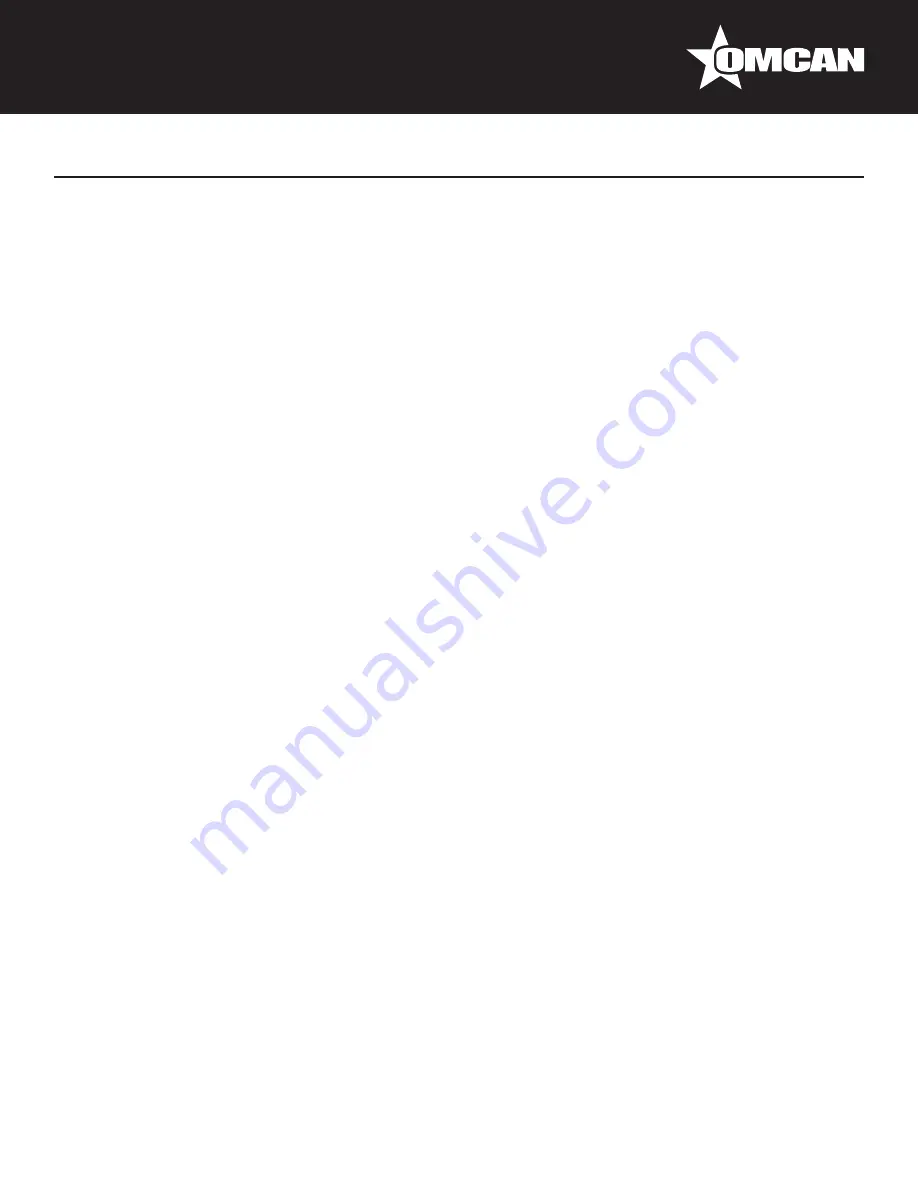
12
Maintenance
• For efficient operation, it is important that the condenser surface be kept free of dust, dirt, and lint.
Condensers accumulate dirt and dust and require cleaning every 30 days.
• We recommend cleaning the condenser coil and fins at least once per month.
• Clean with a commercial condenser coil cleaner, available from any kitchen equipment retailer. Brush the
condenser fins from top to bottom, not side to side.
• After cleaning, straighten any bent condenser fins with a fin comb.
CLEANING THE FAN BLADE AND MOTOR
•
If necessary, clean the fan blades and motor with a soft cloth. If it is necessary to wash the fan blades,
cover the fan motor to prevent moisture damage.
CLEANING THE INTERIOR OF UNIT
•
When cleaning the cabinet interior ,use a solvent of warm water and mild soap.
•
Do not use steel wool, caustic soap, abrasive cleaners, or bleach that may damage the stainless steel
surface.
•
Wash door gaskets on a regular basis, preferably weekly. Simply remove door gasket from the frame of the
door, soak in warm water and soap for thirty (30) minutes, dry with soft cloth, and replace.
•
Check door gaskets for proper seal after they are replaced.
•
Periodically remove the shelves and pilasters from the unit and clean them with mild soap and warm water.
To remove the pilasters, first remove the shelves and shelf brackets. Then, simply lift the pilaster up and
out.
STAINLESS STEEL CARE AND CLEANING
CAUTION:
Do not use any steel wool, abrasive or chlorine based products to clean stainless steel surfaces.
8 STEPS THAT CAN HELP PREVENT RUST ON STAINLESS STEEL
1. Use the correct cleaning tools. Use non-abrasive tools when cleaning your stainless steel products. The
stainless steel’s passive layer will not be harmed by soft cloths and plastic scouring pads.
2. Clean along the polish lines. Polish lines or grain are visible on some stainless steel. Always scrub parallel
to visible lines. Use a plastic scouring pad or soft cloth when grain is not visible.
3. Use alkaline, alkaline chlorinated or non-chloride containing cleaners. While many traditional cleaners are
loaded with chlorides, the industry is providing an ever increasing choice of non-chloride cleaners. If unsure
of chloride content contact the cleaner supplier. If present cleaner contains chlorides, ask for an alternative.
Avoid cleaners containing quaternary salts as they can attack stainless steel causing pitting and rusting.
4.
Water treatment. To reduce deposits, use soft water whenever possible. Installation of certain filters can be
an advantage. Contact a treatment specialist about proper water treatment.
5.
Maintain cleanliness of food equipment. Use cleaners at recommended strength(alkaline, alkaline
chlorinated or non-chloride). Avoid buildup of hard stains by cleaning frequently.
6. When using chlorinated cleaners you must rinse and wipe dry immediately. It is better to wipe standing
cleaning agents and water as soon as possible. All stainless steel equipment to air dry. Oxygen helps
maintain the passivity film on stainless steel.
7.
Hydrochloric acid (muriatic acid) should never be used on stainless steel.
Summary of Contents for RE-CN-0036-C
Page 15: ...15 Parts Breakdown Model RE CN 0036 C 50070 ...
Page 17: ...17 Parts Breakdown Model RE CN 0052 C 50071 ...
Page 19: ...19 Parts Breakdown Model RE CN 0072 C 50072 ...
Page 21: ...21 Electrical Schematics Model RE CN 0036 C 50070 ...
Page 22: ...22 Electrical Schematics Model RE CN 0052 C 50071 ...
Page 23: ...23 Model RE CN 0072 C 50072 Electrical Schematics ...













































